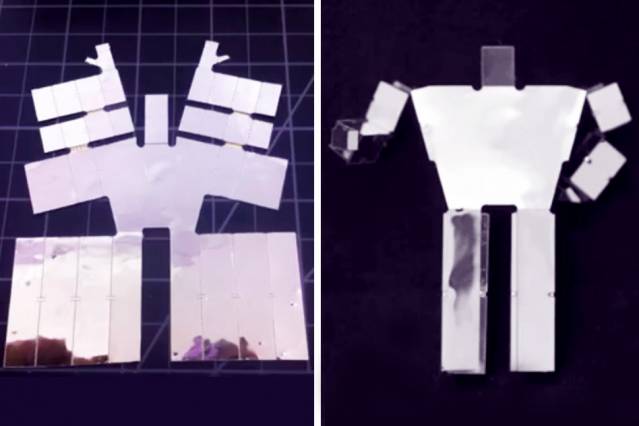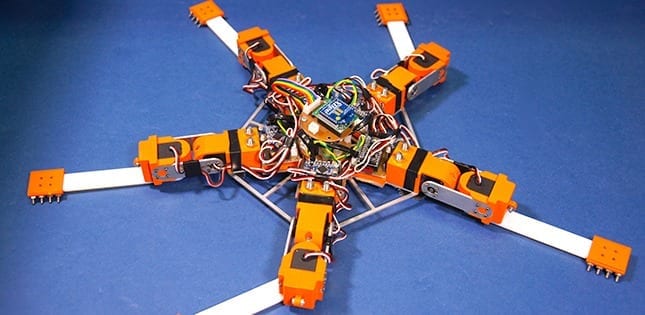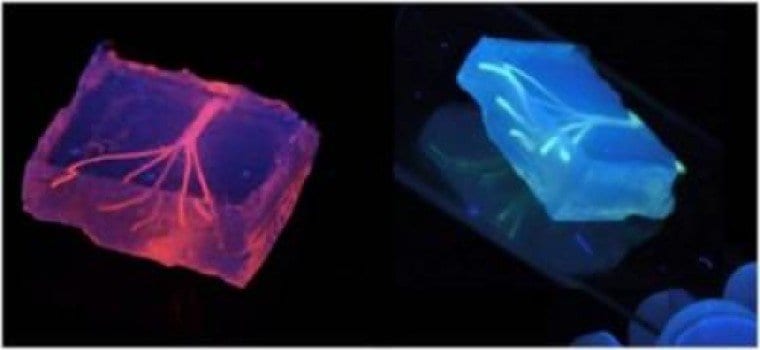
New algorithms and electronic components could enable printable robots that self-assemble when heated.
In two new papers, the researchers demonstrate the promise of printable robotic components that, when heated, automatically fold into prescribed three-dimensional configurations.
One paper describes a system that takes a digital specification of a 3-D shape — such as a computer-aided design, or CAD, file — and generates the 2-D patterns that would enable a piece of plastic to reproduce it through self-folding.
The other paper explains how to build electrical components from self-folding laser-cut materials. The researchers present designs for resistors, inductors, and capacitors, as well as sensors and actuators — the electromechanical “muscles” that enable robots’ movements.
Read more . . .
The Latest on: Robots that self-assemble
[google_news title=”” keyword=”Robots that self-assemble” num_posts=”10″ blurb_length=”0″ show_thumb=”left”]
via Google News
The Latest on: Robots that self-assemble
- John Mulaney’s ‘Everybody’s in L.A.’: A guide to the hyperlocal referenceson May 8, 2024 at 2:07 pm
John Mulaney’s latest Netflix foray, a live late-night show for six nights only, features people, places and things specific to Los Angeles.
- Magnetic microrobot swarms clean water of microplastics and bacteriaon May 8, 2024 at 6:02 am
Microplastics are one of the biggest environmental and health risks faced by our generation. Now, researchers have developed swarms of tiny robots, or microrobots, that not only microplastics from ...
- Commentary: How robots making your burger and fries can lead to greater income inequalityon May 6, 2024 at 1:00 am
On April 1, more than half a million fast-food workers in California got a raise, with minimum wage across the sector bumped up to $20 per hour. That same week, ...
- This Eufy self-emptying robot vacuum is over 50% offon May 2, 2024 at 5:00 pm
With 2,000Pa suction power, Wi-Fi connectivity, planned pathfinding, and the ability to self-empty, the Eufy 30+ offers features of a $400+ robot vacuum, but it's currently on sale for $197.
- A Roundup of New Robotson May 1, 2024 at 6:16 am
The cups are available in four diameters, from 40 to 100 millimeters, and three mounting configurations (3/8G male or female and 32 millimeter square). All are made from thermoplastic polyurethane for ...
- Opinion: How robots making your burger and fries can lead to greater income inequalityon May 1, 2024 at 4:01 am
That same week, the self-proclaimed “world ... retrieving cooked items that the robots had deposited into buckets. Then this person manually assembled, packaged and delivered the food to ...
- Best robot vacuum deals in May 2024on April 30, 2024 at 6:57 am
Today's robot vacuums can clean and mop all types of surfaces from carpets to hardwood floors. Plus, some of the pricier models can self-clean, which means you'll only have to empty their dust ...
- Enter Robots: Are We Ready?on April 25, 2024 at 11:09 am
Robotics is a much broader technology: Assembly robots in factories ... will give patients increasing control of these bionic parts. Self-contained power sources, combined with artificial ...
- Litter-Robot 4 Vs. 3 Connect: Which Automatic Litter Box Should You Get?on April 25, 2024 at 9:02 am
They come fully assembled, so you just have to take them out of ... the sensors aren’t technically as effective as the ones in the Litter-Robot 4. The newest version of the self-cleaning litter box ...
- Will Robots Replace Warehouse Workers?on April 25, 2024 at 6:27 am
Robots are transforming the warehouse & manufacturing industry. From efficient order fulfilment to job security, learn what roles are safe amidst automation.
via Bing News










